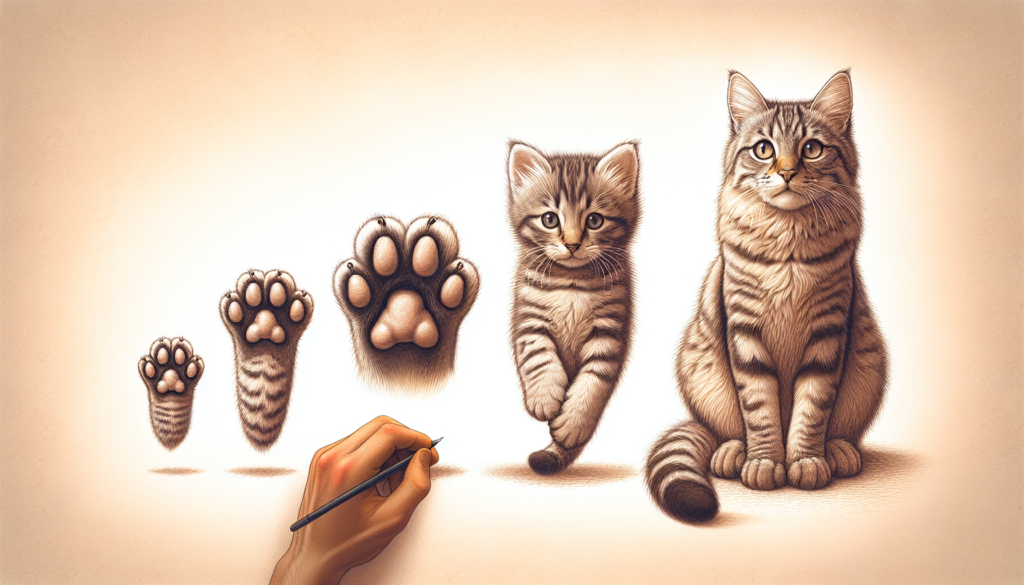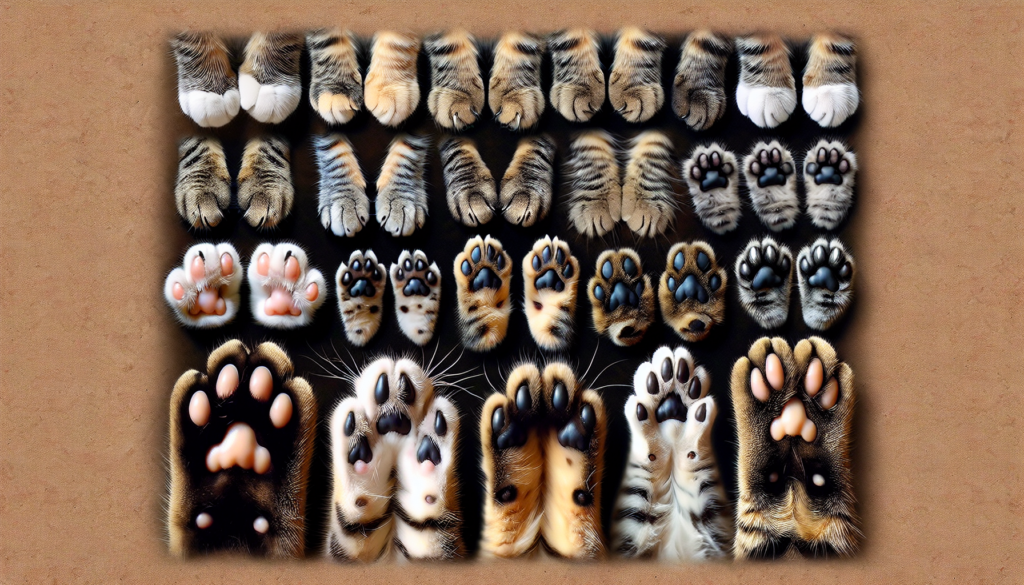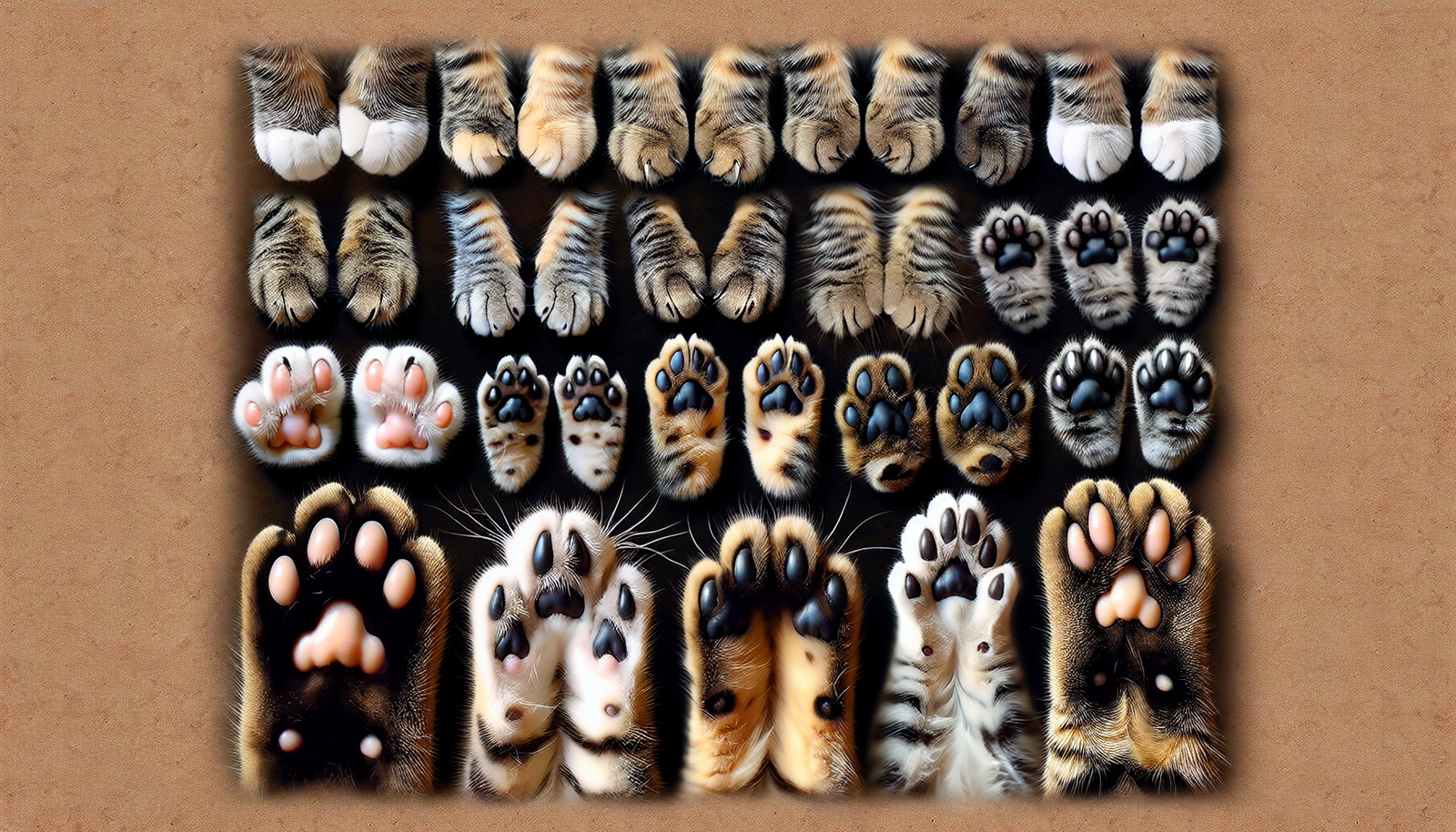Have you ever wondered how long it takes for a tabby cat to grow into a beautiful, majestic feline? Well, get ready to embark on a delightful journey as we uncover the growth timeline of these charming little creatures. From their tiny, adorable beginnings to their full-grown splendor, you’ll marvel at the stages of development that shape a tabby cat’s life. Join us as we whisk you away into the world of feline growth and discover the incredible transformation that takes place over time.
The Growth Timeline of a Tabby Cat

Birth to Two Weeks Old
Birth
Congratulations on the arrival of your adorable tabby kitten! The journey of raising a tabby cat begins from the moment they are born. The birthing process is a remarkable event as you witness new life entering the world. During this time, it is crucial to provide a safe and comfortable environment for the mother cat and her litter.
Physical Characteristics
Newborn tabby kittens are incredibly tiny and fragile, usually weighing around 3 to 4 ounces. Their eyes are closed, and they rely solely on their sense of touch and smell to navigate their surroundings. Their soft fur is still short, and they require the warmth of their mother or a suitable heat source to stay cozy.
Development
During the first two weeks, the primary focus of a tabby kitten’s development is on rapid growth. They will double their birth weight within the first seven to ten days and continue to gain weight steadily. The bonding between the kittens and their mother strengthens, as they spend most of their time nursing and sleeping. It is essential to provide a calm and nurturing environment during this period to ensure their healthy growth and development.
Two to Four Weeks Old
Growth and Development
As your tabby kittens enter their second to fourth weeks of life, they will become more active and start to explore their surroundings. You will witness their tiny legs grow stronger, enabling them to crawl and eventually walk. They will begin to open their eyes between ten to fourteen days, revealing captivating and curious gazes. This period is crucial for their physical and cognitive development as they begin to learn and interact with the world around them.
Exploring the Environment
At this stage, you can introduce a safe and supervised play area for your kittens to start exploring their environment. Providing toys, such as cat-safe balls or small plush toys, can enhance their sensory experiences and stimulate their natural instincts. Make sure to remove any potential hazards and ensure the area is kitten-proofed to avoid accidents or injuries.
Socialization
Socialization is an essential aspect of your tabby kittens’ development during this phase. Interacting with them daily through gentle handling and positive experiences will help build their trust in humans and establish a strong bond. Encourage playtime with their littermates, as it promotes healthy social skills and enhances their overall development.
One Month to Three Months Old
Physical Changes
Between the ages of one month to three months, you will start noticing significant physical changes in your growing tabby kittens. Their limbs will lengthen and become more coordinated, allowing them to engage in energetic play sessions that involve climbing, chasing, and pouncing. Their baby teeth will also begin to emerge, setting the stage for future milestones such as weaning and teething.
Weaning
Around the age of four weeks, it’s time to start introducing solid food to your tabby kittens. You can begin by offering moistened kitten food or a high-quality canned food formulated specifically for kittens. Initially, they may only nibble or lick at the food, but with patience and encouragement, they will gradually transition to solid meals. It’s crucial to monitor their progress and ensure they are still nursing or receiving the necessary nutrition from their mother.
Play and Exercise
During this phase, playtime becomes an integral part of your tabby kittens’ daily routine. Engage them in interactive play sessions using feather wands, crinkly toys, or small balls. Playing not only provides mental and physical stimulation but also helps them develop coordination, agility, and hunting instincts. Set aside dedicated playtimes throughout the day to bond with your kittens and foster their overall well-being.
Three to Six Months Old
Teething
Between three to four months, your tabby kittens will experience teething. This is a natural process where their baby teeth fall out, and their permanent teeth start to emerge. During this time, kittens may experience mild discomfort and may exhibit behaviors like increased chewing and biting. Provide them with appropriate chew toys or dental treats to alleviate teething discomfort and protect your furniture from their exploratory teeth.
Sexual Maturity
Around four to six months, tabby kittens reach sexual maturity. It’s important to consider spaying or neutering your kittens during this time to prevent unwanted pregnancies and behavioral issues. Consult with your veterinarian to determine the appropriate age and the best course of action for your tabby cats’ long-term health and well-being.
Behavioral Changes
During this phase, you might notice changes in your tabby kittens’ behavior as they continue to grow and develop. They may become more independent, assertive, or playful. Provide them with ample opportunities for mental stimulation and physical exercise to channel their energy positively. Interactive toys, scratching posts, and dedicated play sessions can help satisfy their natural curiosity and instinctual behaviors.

Six to Nine Months Old
Continued Growth
Between six to nine months, your tabby kittens will continue their growth journey. They will become more agile and graceful as they refine their motor skills, giving you glimpses of the adult cat they are becoming. It’s crucial to monitor their weight during this phase and adjust their diet accordingly to ensure they are growing at a healthy pace.
Healthcare Considerations
Regular veterinary check-ups are essential, even as your tabby kittens transition into their adolescent phase. Consult with your veterinarian regarding vaccinations, parasite prevention, and any other healthcare considerations specific to your cat’s breed and environment. Early detection of potential health issues can lead to timely interventions and optimal outcomes.
Diet
During this phase, your tabby kittens will require a diet that meets their growing nutritional needs. Consult your veterinarian to determine the appropriate balance of kitten food and portion sizes based on their age, weight, and activity levels. Adequate hydration is also crucial, so ensure fresh water is readily available at all times.
Nine to Twelve Months Old
Full Size and Development
By the time your tabby kittens reach nine to twelve months, they will have reached their full size and physical development. Most tabby cats will have achieved their adult height and weight at this point. However, it is important to remember that individual growth rates may vary among cats of the same breed or litter.
Spaying or Neutering
If you haven’t already, this is the ideal time to consider spaying or neutering your tabby cats. Spaying females and neutering males not only helps prevent unwanted litters but can also have positive effects on their long-term health and behavior. Consult your veterinarian for guidance and to schedule the procedure.
Established Routine
As your kittens near their first birthday, they thrive on routine and consistency. Providing a stable environment, regular feeding times, and designated play periods will contribute to their overall well-being and happiness. With an established routine, your tabby cats can feel secure, confident, and comfortable in their forever home.
One Year and Beyond
Adult Maintenance
Congratulations, your tabby kittens have now transitioned into adult cats! While their physical growth may be complete, remember that maintaining their overall health and well-being is an ongoing responsibility. Continue to provide a balanced and nutritious diet suited to their life stage, ensuring they receive all the necessary nutrients for optimal health.
Lifespan and Longevity
Tabby cats, like most domestic cats, have an average lifespan of around 15 years or longer with proper care. Remember to schedule regular veterinary check-ups, monitor their weight, and provide a stimulating environment to support their mental and physical well-being throughout their lifetime.
Common Concerns
Weight Gain or Loss
Throughout your tabby cat’s life, it’s important to monitor their weight to prevent obesity or malnutrition. Obesity can lead to various health issues, while sudden weight loss may indicate an underlying health problem. Regularly consult with your veterinarian for guidance on maintaining an appropriate weight and making any necessary dietary adjustments.
Dental Health
Dental health is a vital aspect of your tabby cat’s overall well-being. Establish a dental care routine early on by gradually introducing toothbrushing and providing dental treats designed to promote oral health. Regular veterinary dental check-ups can help detect and prevent dental issues such as tartar buildup and gum disease.
Behavioral Issues
Just like humans, cats may occasionally exhibit behavioral issues. These can range from scratching furniture to litter box problems. Understanding the underlying causes and providing appropriate training and environmental enrichment can address these issues effectively. Consult with a professional cat behaviorist or your veterinarian for guidance and support.
Healthcare Considerations
Vaccinations
Vaccinations play a crucial role in safeguarding your tabby cat’s health by providing protection against common contagious diseases. Consult your veterinarian on the appropriate vaccination schedule and discuss any additional vaccines that may be necessary based on your tabby cat’s lifestyle and potential exposure risks.
Parasite Prevention
To protect your tabby cat from external and internal parasites, including fleas, ticks, worms, and mites, proactive preventative measures should be taken. Your veterinarian can recommend safe and effective products for flea and tick prevention, as well as deworming protocols tailored to your cat’s specific needs.
Regular Vet Check-ups
Regular veterinary check-ups are essential for maintaining your tabby cat’s overall health and catching any potential health issues early on. Schedule annual or semi-annual wellness visits, depending on your veterinarian’s recommendation. These visits provide an opportunity for comprehensive physical examinations, vaccinations, and discussions about your tabby cat’s overall well-being and any concerns you may have.
Providing a Loving Home
Nutritious Diet
To ensure your tabby cat’s long and healthy life, providing a balanced and nutritious diet is paramount. Feed your cat high-quality commercial cat food, both wet and dry, that meets their specific dietary requirements. Consider age, weight, activity level, and any specific health concerns when selecting the appropriate food. Always provide fresh water and monitor their eating habits to maintain a healthy appetite.
Regular Exercise
Physical exercise is essential for your tabby cat’s physical and mental well-being. Engage in play sessions that incorporate toys, laser pointers, or interactive puzzles to stimulate their natural hunting instincts. Provide scratching posts, climbing trees, and vertical spaces to allow them to satisfy their natural feline behaviors. Regular exercise not only keeps them physically fit but also helps prevent obesity and boredom-related behavioral issues.
Grooming and Hygiene
Regular grooming is necessary to maintain your tabby cat’s coat health and prevent matting. Brush their fur gently, especially if they have longer hair, to remove any loose hair and minimize hairballs. Make sure to trim their nails regularly to prevent them from becoming overly long or causing any discomfort. Additionally, maintain dental hygiene by introducing toothbrushing gradually and seeking professional dental cleanings when necessary.
By following this comprehensive guide, you can provide a loving and nurturing home for your tabby cat throughout their entire lifespan. Watching them grow, develop, and mature into graceful adult cats will surely bring you immeasurable joy and companionship.

